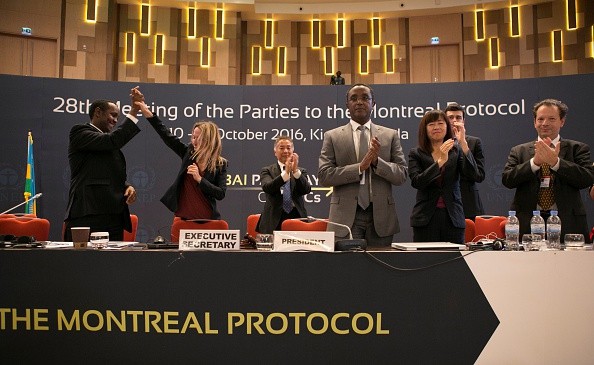An air conditioner may refresh the environment in your house, but it is most likely deteriorating the Earth's atmosphere in the process.
Today's air conditioning, like other cooling technologies such as freezers and heat pumps, frequently relies on chemicals known as HFCs (hydrofluorocarbons), which are extremely potent greenhouse gases.
HFCs have been employed to replace ozone-depleting compounds, and their emissions have skyrocketed during the last two decades.
HFC consumption affects future emissions

HFCs may be substituted by a variety of gases with considerably lower climatic impact per kilogram, such as ammonia, CO2, and hydrocarbons like propane, as per ScienceDaily.
Indeed, international law already requires the phase-out of HFCs.
These compounds were added to the Montreal Protocol, a treaty initially designed to limit ozone-depleting pollutants, in 2016.
The protocol's 2016 Kigali Amendment mandates HFC cutbacks for four sets of nations through 2047, with consumption falling by 80% to 85% compared to their respective baselines.
The issue is that HFC emissions lag behind usage by years. They can leak out of cooling devices during manufacturing, usage, and disposal.
Using the IIASA Greenhouse Gas and Air Pollution Interactions and Synergies (GAINS) model, the new study takes this lag into account and investigates how different HFC consumption scenarios impact future emissions.
According to the analysis, if HFC emissions were uncontrolled from 2019 to 2050, they would have totaled more than 92 billion tons CO2 equivalent.
The amount should be around 32 billion tons if the Kigali Amendment is followed.
That is, however, much more than the approximately 16 billion tons in SSP1.
The most successful alternative entails all countries not only reaching 95% by 2050, but also making significant reduction much sooner.
This results in cumulative emissions of fewer than 24 billion tons CO2 equivalent by 2050, bringing us significantly closer to the 1.5°C climatic scenario.
Even better, an early move would provide an opportunity to replace inefficient cooling equipment with more efficient gear.
This may save up to 20% of predicted future global power use, double the climate benefits of the HFC phase-out, while also reducing air pollution, improving energy availability, and lowering consumer energy expenditures.
What is the Montreal Protocol?
In order to safeguard the climate and the ozone layer, more than 170 nations agreed to alter the Montreal Protocol on Substances that Deplete the Ozone Layer during the 28th Meeting of the Parties to the Montreal Protocol on Substances that Deplete the Ozone Layer in Kigali/Rwanda in October 2016, according to UNIDO.
The Kigali Amendment seeks to reduce the production and use of hydrofluorocarbons (HFCs).
HFCs are now employed as replacements for hydrochlorofluorocarbons (HCFCs) and chlorofluorocarbons (CFCs) due to their minimal influence on ozone depletion.
However, they are potent greenhouse gases.
The Kigali Amendment will make the Montreal Protocol an even more potent tool in the fight against global warming.
Related article: How Saving the Ozone Layer in 1987 Slowed Global Warming
© 2025 NatureWorldNews.com All rights reserved. Do not reproduce without permission.





